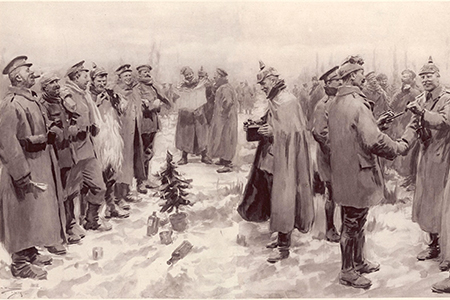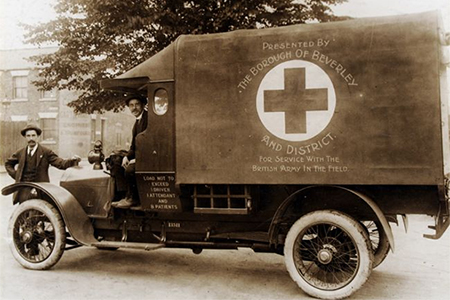Please accept our sincere gratitude for making Insights so widely read. It has been a delight providing these informative articles over the past few years. Please indulge us as we take a break from our standard format for this year-ending Insight.
— The Taconic Biosciences' Insight Team
 What will you do as we near the end of the year? It's the time when many take time off to celebrate religious and cultural holidays. It is a time to spend with family and friends. It is a time to reflect on what has happened over the past year. It is a time for rest before we gear up for next year.
What will you do as we near the end of the year? It's the time when many take time off to celebrate religious and cultural holidays. It is a time to spend with family and friends. It is a time to reflect on what has happened over the past year. It is a time for rest before we gear up for next year. Downtime and relaxation help us better prepare for what is ahead. But how do you take a respite in these turbulent times? How do you rest knowing what you may be facing in the coming year, whether personal or professional? Remember that chaotic and stressful times can be a crucible for innovation.
Joyeux Noel
The war to end all wars — World War I (WWI) — ended 101 years ago. The armistice was very important as it ended hostilities and allowed nations to move on and heal. I recommend watching the film Joyeux Noel (2005) while on break this holiday season. It details the story of an unlikely truce that even Pope Benedict XV could not convince the French and German governments to enact. Spoiler alert — the French, Scottish, and German troops take it upon themselves to declare a truce — a recess from the bloodiest war in history up to that time, as there were over 10 million military deaths in WWI. On December 25, 1914, 105 years ago, an informal Christmas truce was declared up and down the trenches of the Western Front. During this truce, soldiers exchanged small gifts of chocolate, champagne, and photos of loved ones.They sang Christmas carols and celebrated Mass. Unfortunately, this truce was short-lived, and the hostilities began again towards the end of Christmas Day.
We can only wonder what the conversations were during that brief ceasefire. I'm sure most of the conversation related to missing families and home. Perhaps, for those few who could speak both French and German, there were more in-depth discussions about the war and what good would come of it. As it turns out, many medical breakthroughs developed during or as a result of WWI. Some of the most well-known researchers in the scientific and medical communities served during the war and were influenced by what they saw.
Revolutions in Medicine
With the development of new weapons, medicine and treatment advanced as well. 70% of injuries and deaths in WWI were due to mortar shells, which caused new pathologies and types of wounds. WWI was the first conflict where the number of deaths from wounds outstripped those from disease1,2.Some of these treatments are so routine today that we can't imagine a time when they did not exist.
Ambulance

This ambulance was presented to the British Army during the First World
War by the Borough of Beverley
Antiseptic
Up to 70% of post-trauma infections resulted in the amputation of limbs rather than treatment of the wound itself. Clostridium perfringens, which causes the rapid necrosis known as gas gangrene, was often the bacteria causing these infections. To address these infections, doctors across Europe adopted the Carrel-Dakin method during the war. Drs. Alexis Carrel and Henry Dakin developed a solution of sodium hypochlorite that would kill the bacteria without burning the nearby flesh. This treatment eliminated the infection and allowed surgeons to perform the necessary procedures to repair injuries.Anesthesia
George Crile introduced a method of anesthesia that he and Agatha Hodgins had developed in Cleveland. When Crile arrived in Europe, he brought with him 18 large cylinders — 3,000 gallons — of nitrous oxide. He performed surgical demonstrations using a nitrous oxide-oxygen mix, which was enough to put a patient to sleep but not into a state of shock. This anesthesia allowed doctors to operate without causing pain to patients.Less toxic, morphine-derived anesthetic agents were also developed during this time, as well as new instruments to deliver anesthetics to patients. The Camus and the Ombredanne ether inhalers were pervasive in anesthesiology during WWI.
Detection
In 1914, Marie Curie joined the Union des femmes de France and with the help of the Red Cross, installed X-ray machines in hundreds of vehicles enabling the imaging of wounds close to the battlefront. These radiological ambulances became known as "petite curies." By the end of the war, over 1 million soldiers had X-rays of their injuries.Vaccination
Epidemics were one of the leading causes of death in WWI. In March of 1914, vaccination against typhoid became mandatory for all French soldiers, saving over 20,000 lives. The tetanus vaccination saw widespread use after development for Canadian soldiers as well.Blood transfusions
Before WWI, most blood transfusions were achieved through the direct connection between donor and patient. However, this procedure was impractical on or near the battlefront. In 1914 Belgian Dr. Albert Hustin developed the method of preserving blood through the addition of citrate to collected blood. This method allowed transportation and administration of blood closer to the front.Reconstructive Surgery
The development of skin and bone grafts helped treat facial injuries sustained during trench warfare. While today plastic surgery is often associated with cosmetic surgery, in WWI it was vital in saving lives and returning soldiers to productive lives after the war.The Thomas splint was implemented at the Western Front in 1916 and subsequently reduced the rate of mortality from certain fractures from 80% to 20%3.
Notable scientists who served in WWI
In addition to the medical breakthroughs that came out of WWI, there were many distinguished scientists that served in the war as well:- Marie Curie — a French/Polish scientist who was the first woman to win a Nobel Prize, the first person to win two Nobel Prizes, and the only person to win the Nobel Prize in two different scientific disciplines (chemistry and physics).
- Edwin Hubble — an American astronomer who helped establish extragalactic astronomy, observational cosmology, and developed Hubble's law.
- J.B.S. Haldane — a British scientist known for his work in physiology, genetics, and evolutionary biology.
- Erwin Schrödinger — an Austrian physicist who won a Nobel Prize for his wave equation known as Schrödinger's equation.
- Frank Fenner — an Australian virologist who oversaw the eradication of smallpox.
- Sir Frederick Grant Banting — a Canadian responsible for the co-discovery of insulin and its therapeutic potential, winner of a Nobel Prize.
- Elizabeth Kenny — an Australian nurse who developed passive movement treatment for patients infected with polio. Her methods were the precursor to physical therapy.
- Gerhard Domagk — a German pathologist and Nobel Prize winner for the development of Sulfonamidochrysoidine, the first commercially-available antibiotic.
- Lise Meitner — an Austrian-Swedish physicist and part of a team that developed nuclear fission.
















.jpg)

.jpg)
.jpg)
.jpg)
.jpg)





.jpg)


.jpg)
.jpg)




.jpg)




.jpg)

.jpg)




